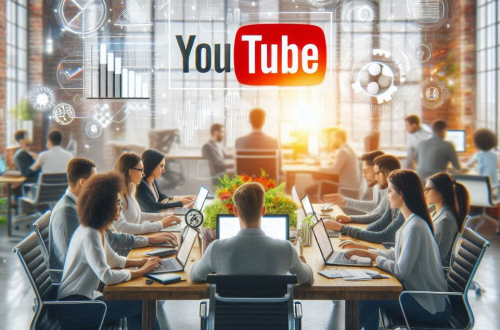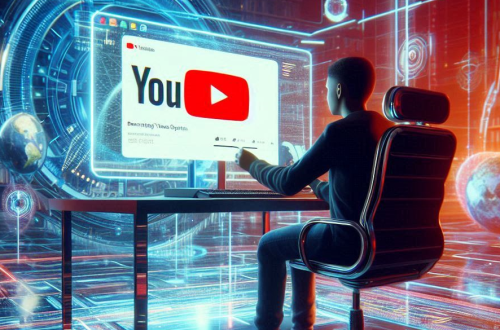In 2025, YouTube SEO isn’t just about stuffing keywords in your video description anymore. It’s evolved into a complex blend of algorithms, user behavior signals, and smart content strategy. Whether you’re a content creator looking to grow a loyal audience or a brand wanting more visibility, understanding YouTube SEO is the key to winning in the video space.
So, how do you climb the ranks in this new YouTube era? It starts with mastering what the platform values most. From keyword research to engagement hacks, we’re diving deep into the proven tactics that’ll help your videos dominate search and suggested feeds. Ready to get those views and subscribers rolling in? Let’s go.
Understanding the YouTube Algorithm in 2025
How the YouTube Algorithm Has Evolved
The YouTube algorithm is a living, breathing beast—and it’s smarter than ever in 2025. Gone are the days when clickbait titles and a few tags could shoot your video to the top. Today’s algorithm is all about understanding intent. YouTube’s AI now prioritizes viewer satisfaction, personalized content, and cross-platform engagement.
It uses machine learning to tailor results to individual users based on watch history, search queries, and even interaction on other Google platforms. That means one-size-fits-all optimization just doesn’t cut it anymore. You need to be strategic—your video must not only be relevant but also engaging from start to finish.
Behavioral signals like watch time, click-through rate (CTR), likes, and comments weigh heavily in the ranking formula. If people are binge-watching your content or interacting with it in meaningful ways, the algorithm sees your video as high-value and boosts its visibility.
Key Ranking Signals You Need to Know
Let’s break down the core metrics YouTube is obsessed with in 2025:
- Watch Time: This is king. The longer someone watches your video, the more valuable YouTube thinks it is.
- Average View Duration: If people are dropping off in the first 30 seconds, that’s a red flag.
- Click-Through Rate (CTR): How many people actually click on your thumbnail after seeing it? This impacts initial impressions big time.
- Engagement: Likes, comments, shares—these show your video is sparking interest and conversation.
- Returning Viewers: If someone watches your videos again and again, YouTube takes that as a sign your content is binge-worthy.
- Session Time: If your video leads to more videos being watched on YouTube, that’s a huge plus.
These metrics are interconnected. For example, a killer thumbnail can increase your CTR, which gets more eyeballs on your content, which can lead to longer watch times—and boom, you’re on the fast track to trending.
Keyword Research for YouTube SEO
Finding High-Intent Keywords for Video Content
If you’re not speaking the language of your audience, they’ll never find you. That’s where keyword research comes in. But this isn’t just about finding popular search terms—it’s about targeting intent.
In 2025, keyword research is more behavior-driven. You want to find what your audience is really looking for, not just what they’re typing. Start with a basic seed keyword—say “fitness tips”—then dig into the why. Are people trying to lose weight? Build muscle? Improve flexibility?
From there, tools like TubeBuddy, VidIQ, and Ahrefs come into play. Use them to uncover long-tail keywords with low competition and high search volume. Look at auto-suggested queries, questions being asked in comments, and even trends from Google Trends.
Focus on keywords with buying or action-based intent like:
- “Best home workouts for weight loss 2025”
- “How to build muscle without a gym”
- “Top yoga routines for beginners”
These long-tail phrases are gold. They have lower competition and attract viewers who are more likely to engage and convert.
Tools and Techniques for Effective YouTube Keyword Research
Here’s a simple keyword research workflow that works wonders:
- Use YouTube Auto-Suggest: Start typing your topic and see what pops up.
- Check Competitors’ Tags and Titles: Tools like TubeBuddy let you peek behind the curtain.
- Explore Google Trends: See what’s hot in your niche—and ride that wave.
- Dive Into the Comments Section: Your audience is literally telling you what they want.
- Analyze Search Volume and Competition: Use VidIQ or Ahrefs to gauge keyword difficulty and value.
And don’t just stop at video titles—use these keywords in your description, tags, and even in your spoken dialogue for closed captions. It all adds up.
Optimizing Video Titles for Clicks and Rankings
Crafting Compelling, Keyword-Rich Titles
Think of your title as the headline of a viral news story. It needs to grab attention while telling the algorithm exactly what your video is about.
Here’s the formula: [Primary Keyword] + [Emotional Hook or Benefit] + [Timeliness]
Example: “Weight Loss Tips for Beginners: Lose 10 lbs Fast in 2025!”
This title is clear, keyword-optimized, and hooks the viewer with a benefit (lose 10 lbs) and urgency (fast, 2025). Make sure your main keyword is toward the beginning of your title—it’s the first thing YouTube’s bots and users see.
Keep it under 60 characters to avoid truncation, and don’t be afraid to use numbers, brackets, and power words (like “proven,” “easy,” “ultimate”). Just don’t clickbait. Misleading titles will destroy your retention rate, which tanks your ranking.
Common Title Mistakes to Avoid
Avoid these traps at all costs:
- Overstuffing Keywords: Looks spammy and hurts CTR.
- Being Too Vague: “Cool Tricks for Success” tells us nothing.
- All Caps Titles: Comes off as yelling—hurts trust.
- Using Misleading Claims: You might get clicks, but your bounce rate will wreck your video.
Your title should strike a balance between being optimized for search and enticing for humans. You’re writing for both the bot and the browser.
Creating Descriptions That Drive Visibility
Structuring Descriptions for SEO
Your description box is prime SEO real estate. The first 2-3 lines are critical—they show up in search results and should hook the viewer instantly.
Start with a strong summary of your video that includes your target keyword. Think of it as a mini blog post. Then expand with timestamps, links to other videos, social media handles, and a call-to-action like “Subscribe for more tips!”
Use natural language, not just keyword stuffing. YouTube’s algorithm understands context, so write like a human but sprinkle in your keywords where they fit.
Use bullet points and spacing to make it easy to skim. Here’s a template:
- 🔥 What you’ll learn in this video: [Keyword-Rich Hook]
- 📌 Timestamps for easy navigation
- ✅ More related videos
- 🚀 Follow me on [Social Media]
- 👇 Subscribe & Hit the Bell!
Leveraging Timestamps, Hashtags, and CTAs
Timestamps are amazing for SEO and user experience. They break your video into chapters, which helps with watch time and makes your video eligible for rich snippets in search.
Hashtags boost discoverability. Use a few targeted ones in the description (not the title), like #FitnessTips2025 or #YouTubeSEO. Stick to 3-5 per video.
And never forget your CTA. Tell people what to do next—like, comment, share, or subscribe. A clear CTA improves engagement, which boosts your rankings.
The Power of YouTube Tags in 2025
Do Tags Still Matter?
There’s been a long-standing debate in the YouTube community: Do tags still matter in 2025? Short answer—yes, but not as much as they used to. While YouTube has publicly downplayed the importance of tags, they still play a subtle role in helping YouTube understand your video’s context—especially when your title or description might be ambiguous.
Tags are most useful for:
- Clarifying the niche or category of your video.
- Associating common misspellings or alternative keyword phrases.
- Enhancing search discoverability when your channel is new or lacks authority.
Think of tags as supporting actors. They won’t carry the entire SEO performance, but they definitely help tell the full story. Especially in crowded niches, properly tagging your video can give it that extra push in recommended videos and search results.
Best Practices for Using Tags Effectively
To get the most from your tags in 2025, follow these quick best practices:
- Use your primary keyword as the first tag.
- Include long-tail variations: If your video is about “vegan meal prep,” also tag “vegan recipes,” “healthy meal prep,” “vegan food 2025.”
- Don’t over-tag: YouTube penalizes spammy behavior. Stick to 8–15 relevant tags.
- Add misspellings or alternate spellings: Like “You Tube SEO,” “youtubeseo,” or international terms.
- Tag your brand or channel name: Helps with cross-video relevance on your own content.
Pair these tags with optimized metadata and you’ll build a stronger foundation for YouTube’s algorithm to categorize and serve your video to the right people.
Thumbnails That Get Clicked
Designing Eye-Catching Thumbnails
Thumbnails are your billboard in the endless scroll of YouTube. In 2025, with increasing competition and ever-shorter attention spans, your thumbnail has one job: get the click.
You only get a second or two to make an impression, so it has to:
- Be visually striking even at small sizes.
- Use bright colors and contrast.
- Show facial expressions—humans are drawn to faces.
- Include text overlays to reinforce your video’s hook.
Use design tools like Canva, Figma, or Photoshop to create custom thumbnails. Never rely on auto-generated ones—they usually look bland or confusing. A/B testing with TubeBuddy can help identify what visual style your audience prefers.
Make sure your thumbnails are brand-consistent. Use a similar style, font, or color palette across all videos. This not only builds recognition but also increases the chances of someone binging your content.
A/B Testing Thumbnails for Higher CTR
One of the smartest moves in 2025 is A/B testing your thumbnails. Platforms like TubeBuddy or native YouTube Studio experiments (rolling out more widely now) let you run two thumbnails and see which performs better.
Test variables like:
- Background color
- Facial expressions (happy vs. serious)
- Text or no text
- Zoom level or cropping
Monitor CTR (Click-Through Rate)—a key performance indicator. YouTube rewards videos with higher CTRs by promoting them more widely. Even a 1-2% bump in CTR can translate to thousands of extra views over time.
Your thumbnail is the first impression—nail it, and your content gets the shot it deserves.
Boosting Engagement Metrics
Increasing Watch Time and Session Duration
Engagement is currency on YouTube—and watch time is the gold standard. In 2025, the algorithm favors videos that keep people watching, not just yours, but others too.
Here’s how to boost watch time:
- Hook viewers in the first 10 seconds. Use a clear value proposition right away.
- Tease what’s coming later in the video to encourage full viewing.
- Edit for pace—cut filler, use pattern interrupts, and keep energy up.
- Use storytelling to build curiosity and emotional investment.
Session Duration is about the total time a viewer spends on YouTube after watching your video. To improve this:
- End your video with a relevant end screen pointing to another video or playlist.
- Create video series or themed playlists.
- Use pinned comments to recommend related videos.
High watch time and session duration signal to YouTube that your content keeps users on the platform, which is their ultimate goal.
Encouraging Likes, Comments, and Shares
These metrics matter more than ever. Likes show approval. Comments show community. Shares show value.
Here’s how to boost them:
- Ask a question at the end of your video to prompt comments.
- Respond to comments quickly to build interaction.
- Use calls-to-action: “Smash the like button if you agree!” or “Drop a comment with your biggest takeaway.”
- Create controversy or open-ended discussions to stir engagement.
The more your video becomes a conversation hub, the more YouTube sees it as a quality content piece worth promoting.
Leveraging Captions and Transcripts
Why Closed Captions Matter for SEO
Captions are no longer just for accessibility—they’re a secret weapon for SEO.
When you add accurate closed captions to your video, YouTube indexes the full transcript. That’s hundreds or thousands of extra words giving context to your content, boosting your chances of ranking for multiple related queries.
Captions help with:
- Keyword density and context.
- User retention—especially non-native speakers.
- Social sharing—captions play automatically in muted previews.
Auto-captions are okay as a starting point, but they’re often error-prone. Always review and edit them or upload a custom transcript for accuracy.
Tools to Generate and Edit Transcripts Easily
Here are some tools making transcript creation painless in 2025:
- Descript: Transcribes audio and allows easy editing.
- Otter.ai: Great for auto-captions and note-taking.
- YouTube’s built-in editor: Offers manual tweaks post-upload.
Once generated, embed those transcripts into your description (use truncated versions if needed), blog posts, or companion articles. It’s not just good SEO—it’s great UX.
Playlists and Video Structure for SEO
Organizing Content to Improve Watch Flow
Playlists are like chapters of a book—and YouTube loves well-organized books.
Here’s how to turn them into an SEO asset:
- Group videos by topic or viewer intent.
- Give playlists descriptive titles using keywords (e.g., “Beginner Guitar Lessons 2025”).
- Write an SEO-optimized description for each playlist.
- Ensure your playlists follow a logical sequence, guiding viewers from basic to advanced topics.
Playlists improve watch flow, which leads to longer sessions. Plus, they show up in search results, giving your channel more surface area to be discovered.
SEO Benefits of Well-Structured Playlists
The YouTube algorithm sees playlists as mini ecosystems. If your playlist keeps people watching multiple videos, that’s a strong signal of relevance.
Other benefits include:
- Improved discoverability in search and sidebar.
- More end screen clicks from related content.
- Increased time-on-channel metric.
And here’s the secret sauce: you can rank entire playlists in search. This means your SEO-optimized playlist title and description can draw traffic to a whole series of videos, not just one.
Utilizing YouTube Analytics for SEO Growth
Metrics to Track for SEO Performance
If you’re not measuring, you’re guessing. YouTube Analytics in 2025 is more powerful than ever, offering deep insights that can drastically improve your SEO strategy—if you know where to look.
Here’s a breakdown of must-watch metrics:
- Click-Through Rate (CTR): How compelling is your thumbnail and title? If your CTR is low, it’s time to revamp your visuals.
- Average View Duration: This tells you how long people are sticking around. Anything above 50% of your video length is solid.
- Watch Time: The holy grail. This metric reflects total minutes watched and heavily influences rankings.
- Traffic Sources: Where are your views coming from? Use this to double down on what’s working—search, suggested, or external sources.
- Engagement (Likes, Comments, Shares): A strong community means stronger SEO signals.
- Returning Viewers: If people are coming back, it shows loyalty and content quality.
YouTube’s advanced analytics now include viewer segmentation, allowing you to see how new viewers vs. subscribers behave. Use this data to tweak content style, length, and delivery.
Making Data-Driven Optimization Decisions
Data should drive your next move. If a video has a high CTR but low watch time, your title and thumbnail are great—but the content’s not delivering. Flip side? A video with a low CTR but high watch time is a gem buried under bad packaging.
Here’s how to turn data into action:
- Use A/B testing to improve underperforming titles and thumbnails.
- Re-optimize descriptions and tags of evergreen content that’s getting consistent views.
- Study traffic patterns to see the best times to publish.
- Double down on video formats that yield longer watch times.
Don’t just post and ghost. Let analytics guide you to bigger wins.
Promotion Beyond YouTube
Social Media Strategies
Relying solely on YouTube’s algorithm is risky. To grow in 2025, you’ve got to hustle outside the platform too—and social media is your best bet.
Here’s how to drive external traffic:
- Tease your videos on Instagram Reels and TikTok. Short-form previews build curiosity and direct users to your full video.
- Use Twitter/X to join trending conversations and drop relevant video links.
- Leverage Facebook Groups and Reddit communities related to your niche—post your content where your target audience hangs out.
Don’t forget LinkedIn if you’re in the professional or educational space. A well-placed how-to video can explode if it solves a problem professionals face.
Also, Pinterest is an underrated traffic source. Create pins linking to your videos with attention-grabbing titles and visuals.
Embedding and Backlinks to Boost SEO
Backlinks aren’t just for websites. Getting your YouTube video embedded on high-authority sites boosts its visibility and credibility.
Try these methods:
- Write blog posts that embed your video and expand on the topic.
- Pitch your video to relevant bloggers or media outlets in your niche.
- Get featured in industry newsletters or online forums.
- Answer questions on Quora or Reddit, embedding your video when relevant.
Backlinks tell both YouTube and Google that your content is valuable. And yes—Google search results often include YouTube videos, so this strategy doubles your exposure.
Collaborations and Influencer SEO Tactics
How Collaborations Improve Rankings
Collabs are a win-win. Not only do you tap into another creator’s audience, but you also signal relevance to the algorithm through cross-channel engagement.
Here’s why collabs work:
- They drive new traffic and subscribers from another niche.
- They boost watch time and session duration, especially when fans watch both creators’ content.
- Collab videos often get more shares, comments, and backlinks.
In 2025, collaboration strategies have gone beyond simple shoutouts. Consider:
- Co-hosting live streams
- Creating multi-part video series
- Hosting reaction or challenge videos together
You’re not just trading audiences—you’re building topical authority and SEO value.
Cross-Promotion and SEO Synergy
To maximize the SEO value of collaborations, cross-promote like a pro:
- Link to each other’s channels in the description and pinned comments
- Use end screens and cards to direct traffic between videos
- Promote each other on social media and email newsletters
- Use joint hashtags or campaign branding
This strategy keeps viewers within your content ecosystem longer, signaling to YouTube that your videos are worth suggesting.
Cross-promotion isn’t just social—it’s smart SEO stacking.
Staying Ahead of SEO Updates
YouTube SEO Trends to Watch in 2025
YouTube’s landscape never sits still, and 2025 is no exception. To stay ahead, you need to ride the wave of emerging trends—not scramble to catch up after they go mainstream.
Watch out for:
- Voice and conversational search: More viewers use voice commands via smart devices.
- AI-generated summaries and chapters: These auto-tag your video for search and discovery.
- Increased importance of AI-quality scores: YouTube’s AI is grading your video’s value, relevance, and trustworthiness.
- Interactive video features: Polls, quizzes, and clickable elements are ranking boosters now.
Another big trend? Topical authority. Channels that cover a subject in-depth tend to rank better than those with scattered topics. So niche down, go deep, and dominate your category.
How to Adapt Your Strategy Quickly
Change is the only constant, and your ability to pivot is what keeps your channel thriving.
Here’s how to stay nimble:
- Follow YouTube Creators Blog and TeamYouTube on X/Twitter.
- Subscribe to YouTube SEO experts and their newsletters.
- Use tools like TubeBuddy or VidIQ for trend alerts and keyword spikes.
- Join creator communities to learn what’s working now.
Build flexibility into your content calendar. Leave space for trending topics, algorithm changes, or sudden collab opportunities.
Staying ahead isn’t about guessing—it’s about watching, learning, and reacting faster than the rest.
Case Studies: Channels Winning with SEO in 2025
Real-World Examples and Lessons Learned
Let’s take a look at real channels that are absolutely crushing YouTube SEO in 2025.
Example 1: TechExplained
A tech channel that saw 3x growth in six months by:
- Publishing keyword-optimized how-to tutorials.
- Embedding videos in companion blog posts.
- Using consistent branding across thumbnails.
Example 2: FitMama 365
This fitness influencer doubled her subscriber count using:
- Playlist strategies for workout series.
- High watch time from 30-day challenge videos.
- Engaging community comments for better rankings.
Example 3: FinanceUnpacked
A finance educator got picked up by Google News and skyrocketed to 100K subs through:
- Long-form, deeply researched explainers.
- Weekly content cadence.
- Smart use of transcripts and closed captions.
These success stories share common tactics: keyword research, consistent posting, smart promotion, and deep audience understanding.
What You Can Apply to Your Channel
Take these insights and apply them today:
- Create thematic content series to improve watch flow.
- Optimize old videos with updated titles, tags, and thumbnails.
- Get your videos embedded in external content.
- Engage with your audience in every comment section.
- Focus on quality and clarity—it’s what keeps people watching.
You don’t need a production studio or massive team. Just a clear plan, SEO-savvy content, and consistent execution.
Final Tips for Long-Term YouTube SEO Success
Building Authority and Consistency
If there’s one thing the YouTube algorithm loves in 2025, it’s consistency—not just in uploading, but in topic authority. You don’t just want to be a creator; you want to become the go-to source in your niche.
Here’s how to build that authority:
- Pick a niche and go deep, not wide. Cover every angle of your subject.
- Post on a schedule—whether it’s weekly, bi-weekly, or monthly. Your audience and the algorithm both need to know when to expect content.
- Create pillar content: These are your big, all-encompassing videos that tackle broad topics and link out to smaller, related videos.
- Use consistent branding: From visuals to tone, a cohesive experience makes you more memorable—and more clickable.
Over time, YouTube begins to associate your channel with specific topics. This gives you a better chance at appearing in suggested videos, topic pages, and Google search results.
Think of it like building credit with YouTube. The more consistent and authoritative you are, the higher your trust score.
Avoiding Black Hat Tactics
Tempted to buy views or stuff your metadata with irrelevant keywords? Don’t. In 2025, YouTube’s spam detection is razor sharp. Manipulative tactics might work short-term, but they can get you shadowbanned—or worse, deplatformed.
Here’s what to avoid:
- Clickbait titles and thumbnails that don’t deliver.
- Buying subscribers or views from sketchy sources.
- Over-tagging or using unrelated keywords.
- Misleading metadata or fake “giveaway” promotions.
Instead, play the long game. Real growth happens when you combine solid SEO with high-quality content and genuine audience engagement.
Keep learning, stay ethical, and your channel will keep climbing.
Conclusion
YouTube SEO in 2025 is no longer just about ticking boxes—it’s about creating a seamless, engaging, and discoverable experience for your viewers. From mastering keyword research and video titles to designing irresistible thumbnails and diving deep into analytics, it’s a blend of art and science.
The rules may evolve, but the fundamentals remain: serve your audience, deliver value, and keep them watching.
By applying the strategies in this guide, you’re not just optimizing videos. You’re building a brand, an audience, and a channel that thrives—algorithm or not.
Ready to rank, grow, and own your niche?
Lights, camera, SEO—go get it.
FAQs
1. How long does it take for YouTube SEO to show results?
Typically, it takes 2 to 8 weeks to see meaningful SEO results, depending on your niche, competition, and upload frequency. Consistency and audience retention speed up the process.
2. Is it still worth using tags in YouTube videos in 2025?
Yes, though they carry less weight, tags help categorize your content and support discoverability, especially for newer channels or misspelled keywords.
3. What’s the most important metric for YouTube SEO success?
Watch Time and Average View Duration are the most crucial. They indicate that your content keeps people engaged, which YouTube rewards with higher rankings.
4. Should I optimize old YouTube videos for SEO?
Absolutely. Updating titles, descriptions, and thumbnails can breathe new life into older videos and help them rank for new keywords or trends.
5. How often should I post to grow on YouTube in 2025?
Quality beats quantity, but consistency is key. Aim for at least one high-quality, optimized video per week to maintain growth and satisfy the algorithm.





